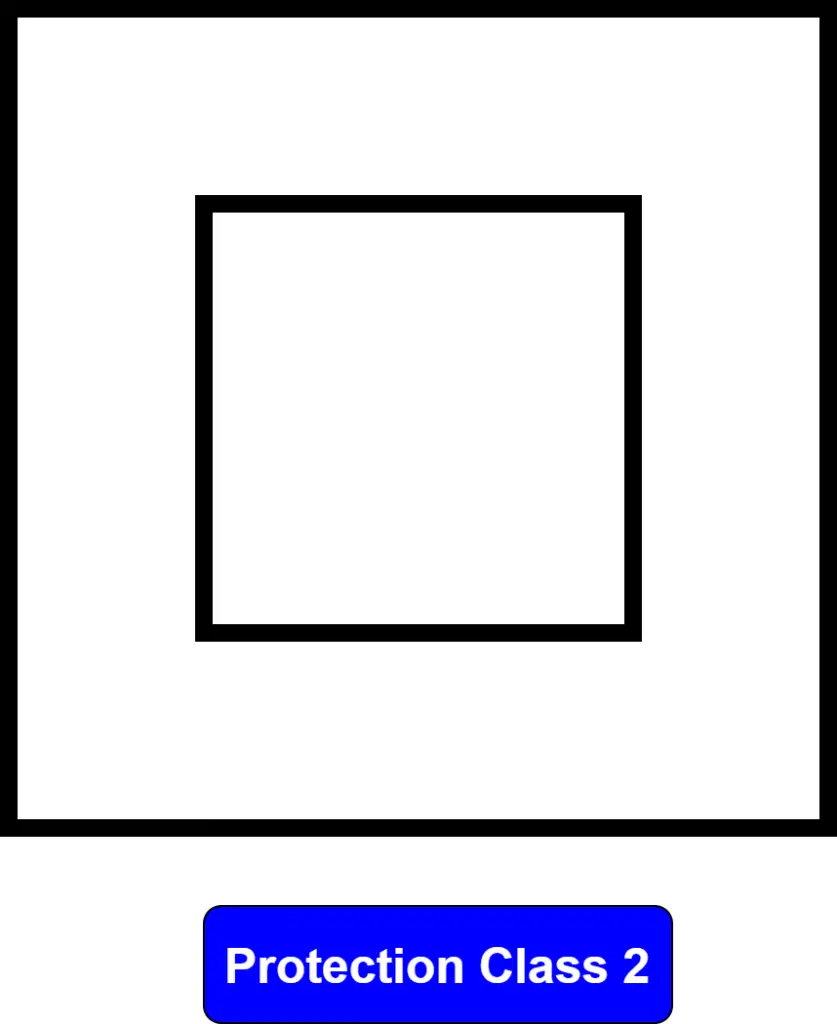Protection classes indicate the level of hazard associated with electrical equipment if a person touches the device’s enclosure. The protection classes classify and label electrical equipment to show the safety measures in place to protect against electric shocks.
Whenever you deal with electrical equipment, it is necessary that they provide a required amount of protection against electric shock. Because electric shock is hazardous for human life, it must be avoided every time contact.
Electric shock can either cause some slight mental shock, paralyze a person, or even cause death. So, whenever you operate equipment, it is of utmost necessity that they work in providing proper protection. According to this, electrical equipment has various classes of protection, which helps the users to deal with them accordingly. In this post, we will see the various electrical equipment protection classes. It comes under IEC 61140.
Protective Class 0:
It is the most basic level of protection that electrical equipment can provide. In this class, the equipment will only provide basic insulation properties. Any electrical connection needs to be joined to proper conductive and grounding paths for safe electricity flow. But, in this class, the equipment is not connected to any protective conductor system, and instead, the equipment surroundings (air, floor insulation) provide the protection level.
This is not suitable for use because the surroundings cannot guarantee protection every time. Also, in this case, if insulation fails, this class will entirely depend on the surrounding environment. It is due to this reason that this class of equipment is mostly not used in any application.
Protection Class 1:
Protection Class 1 eliminates the disadvantage of not being connected to any proper conductive and grounding path in class 0. Class 1 electrical equipment is connected to a protective earth connection. The protective conductor connection is designed as a leading contact so that it is the first to be activated when a plug is inserted and the last to be disconnected when removed. The label of Protection Class 1 is shown in the image below.

When some live wire accidentally touches the body of this equipment, the leakage current is grounded and removes any potential electric shock hazard to any person touching it. An additional contact for connecting conductive components to the protective conductor (ground conductor) is thus provided in the permanent wiring of the system. Components that can be touched are voltage-free if the basic insulation fails in this case.
Protection Class 2:
One more safety layer is added to protection class 2 devices besides basic insulation and protective earthing. It is called double insulation or reinforced insulation. This insulation is additional apart from standard insulation, and they are independent of each other. The label of Protection Class 2 is shown in the image below.

The protective insulation could consist in that all parts that could become live if the operational insulation were to fail are permanently and securely covered with insulating material. It is to be noted that it is not connected to any protective ground but has the insulation material built inside it.
Protection Class 3:
In this class, protection against shock is provided by an additional SELV power supply source. Its voltage range is either 50V AC or 120V DC from a protective transformer. Basically, you get a transformer-like connection (primary and secondary) in this equipment, thus isolating them and providing safety against electric shock. The label of Protection Class 3 is shown in the image below.

Such types of power supplies are safety transformers, electrochemical power supplies, and solar cells to provide that additional power supply driving the circuit. In this type of electrical equipment, no voltage that is higher than the SELV is produced. (SELV – Safety extra-low voltage, measured between conductors or between a conductor and ground, is defined as a voltage that does not exceed 42.4 V peak or constant voltage. The circuits in which these are used must be separated from the power supply by a safety transformer or a similar device.)
This is all about protection classes for electrical equipment.